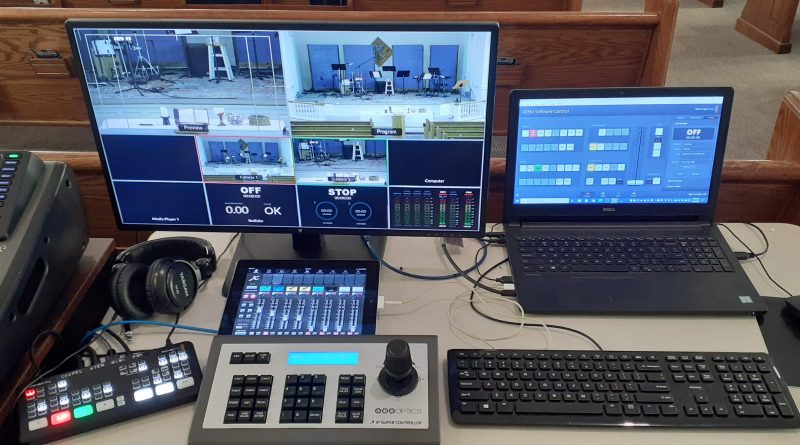Remote PTZ Camera Livestream Installation Project
|
|
On November 25th, 2018 my first livestream went public. It was a worship service that streamed to Facebook and was cobbled together using a single Canon Vixia camcorder on a tripod, routed through an old laptop running OBS Studio (Open Broadcaster Software) with an audio feed patched out of the headphone jack on the CD recorder in the church’s audio rack.
It was not good, but it was a proof of concept. The church leadership liked what they saw and agreed to invest in some equipment upgrades to improve the quality before we made a big push to promote the livestream to the congregation.
Upgrading the Sound System
The first quality improvement was sound. Nobody cares about pretty video if they can’t hear clearly. We needed the ability to fine-tune a sound mix just for the livestream and the existing equipment in the main sanctuary wasn’t up to the task. We upgraded the mixer to a 32 channel Behringer X32 Digital Console. We had previously installed the compact version of this same console in the church’s Chapel for the contemporary worship service and it had all the capabilities we needed to create a custom audio mix for the livestream and a separate mix for the house.
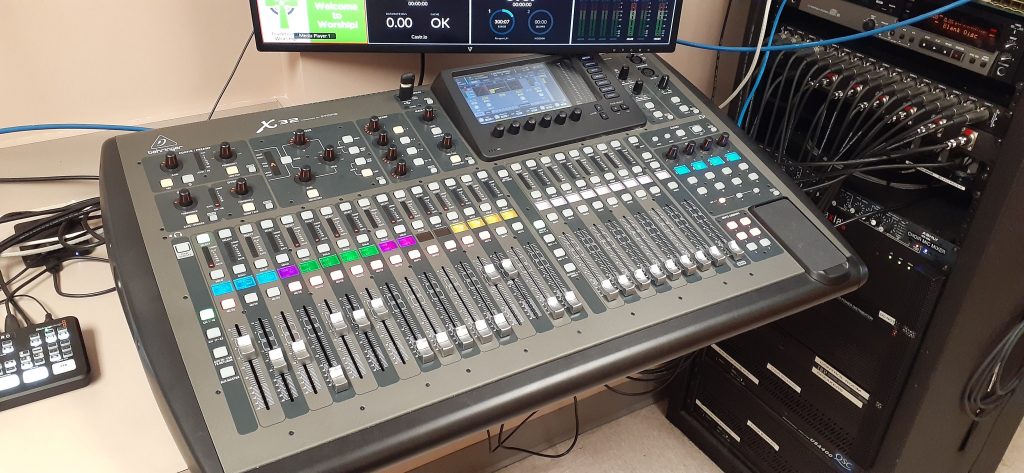
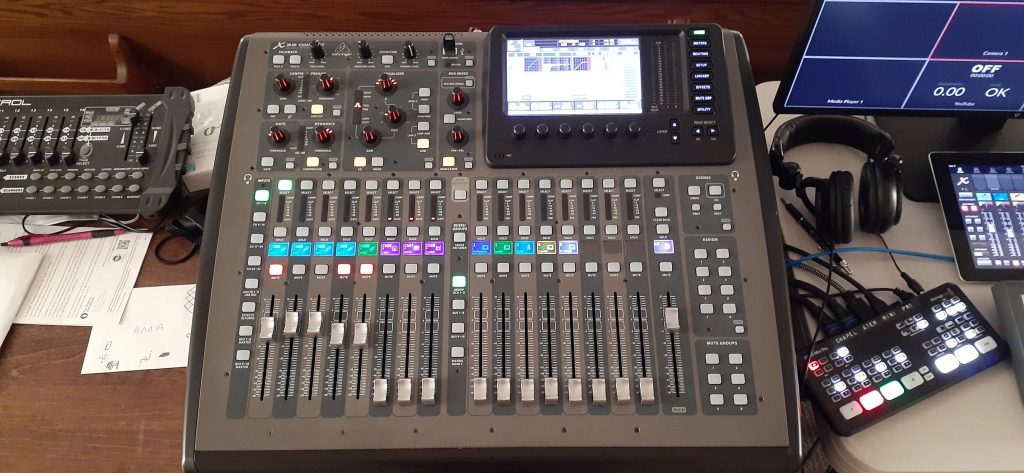
We ran a digital cable from the control room to the front of the sanctuary to connect a digital input box on the stage and also connected all 16 of the existing analog inputs directly into the back of the console. That gave us 32 input channels to work with.
Once all of the hardware was installed, I programmed the board to create the new audio feed for the livestream and connected the audio to the computer via a USB connection.
Computer Upgrades
With the audio fixed, the next issue was the underpowered computer driving the livestream. We were using OBS Studio to process the audio and video and stream it to Facebook. The quality levels possible with this solution are entirely dependent on the speed of the processor in the computer. Our PC was old and struggled to produce a stable high quality stream. So, we upgraded to a newer Core i7 laptop and tweaked the settings in OBS until we had a very respectable livestream each Sunday.
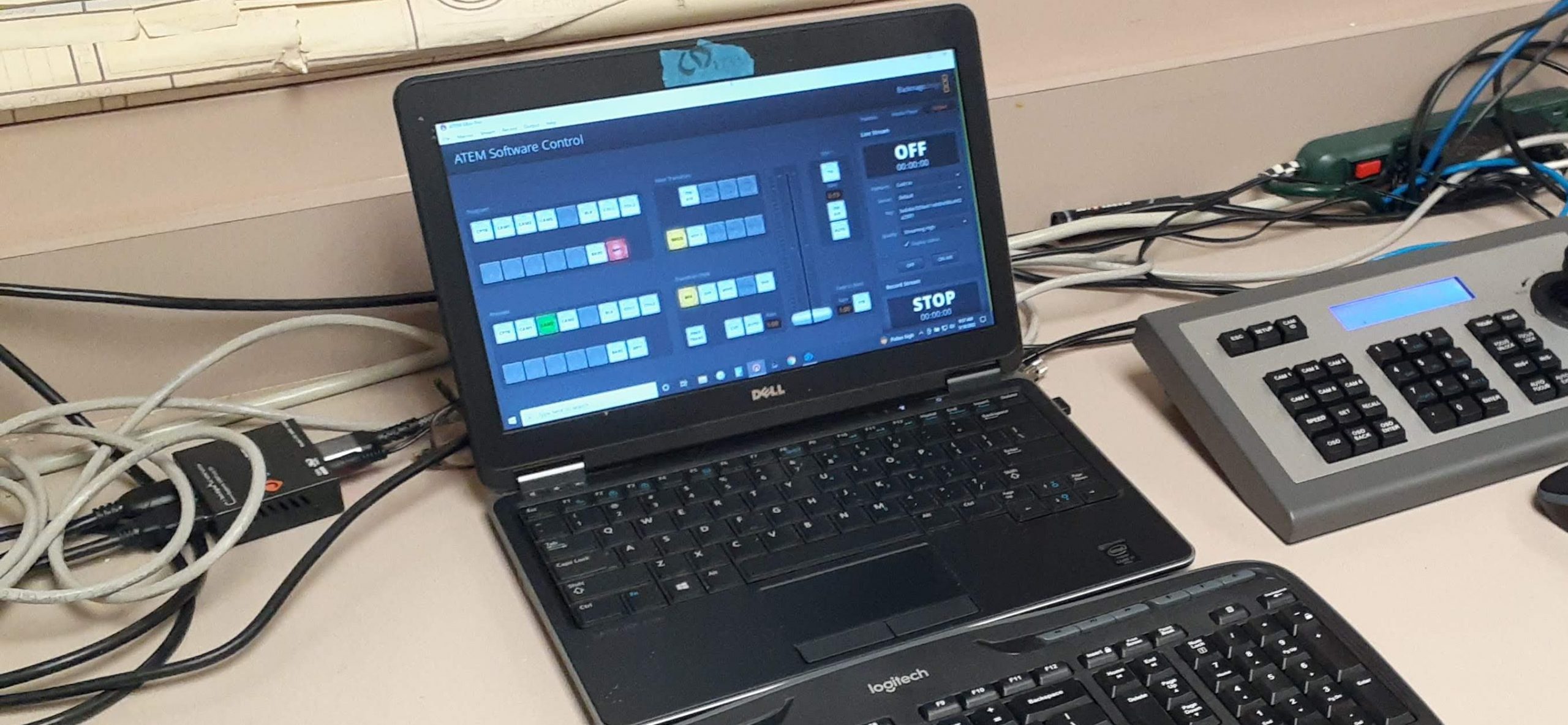
Once we worked out the solution for the traditional service in the Sanctuary we setup a livestream for the contemporary service in the Chapel too.
Covid Strikes – Everybody Pivot to Virtual Worship
We livestreamed the weekly worship services all through 2019 using this basic setup: a camcorder on a tripod routed to a laptop running OBS Studio, connected to our X32 Console for audio and streaming directly to Facebook. We refined things a bit by adding opening and closing graphics and even inserted a pre-recorded invitation video during the Christmas season that year.
Then, in early 2020, Covid hit!
Most churches went into panic mode and tried to cobble together some kind of video church service each week. But, we already had a system in place. I just grabbed one of my light kits, setup a mini tv studio in the church parlor, hooked up all the livestreaming gear, and we had a roundtable live worship service each Sunday for the next few weeks until we made a decision to move to pre-recorded services.
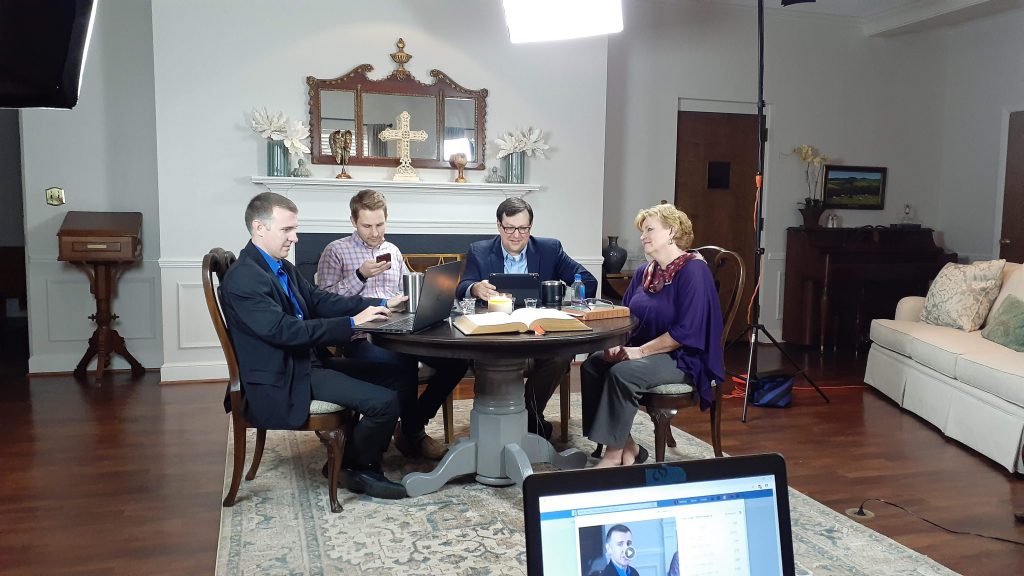
Major Livestream Upgrade
As the Covid pandemic progressed and we started planning for a return to modified in-person worship, it became clear that livestreaming would be a very important component of church life for the foreseeable future. So, the church leadership made the decision to go all-in on upgrading our livestream system and I was tasked with planning out and implementing a new gear.
The key elements of the upgrade were new remotely controllable PTZ cameras mounted to the walls in the Sanctuary and Chapel and dedicated hardware video switchers with built-in streaming encoders. The Sanctuary has 3 cameras and the Chapel has 2 cameras.
Video Switchers and PTZ Cameras
The video switcher/encoders I selected were the Blackmagic Design ATEM Mini Pro. I purchased these right when they were first released. They have since released a number of other versions (the ATEM SDI Pro ISO is my current favorite), but these are still an amazing value. The switcher allows for 4 HDMI video inputs and 2 stereo audio inputs. The single HDMI output can be configured to show the feed from any input, the program output, or a composite image that shows all your inputs, the program and preview windows, and stream and recording info. There is a USB-C output on the back that can be connected to a computer. The computer can then use the program output of the ATEM as a webcam that can connect to Zoom, Google Meets, or other virtual meeting software. The main feature of the ATEM Mini Pro for us is its dedicated onboard streaming encoder. This completely removes the burden of the encoding process from the computer.
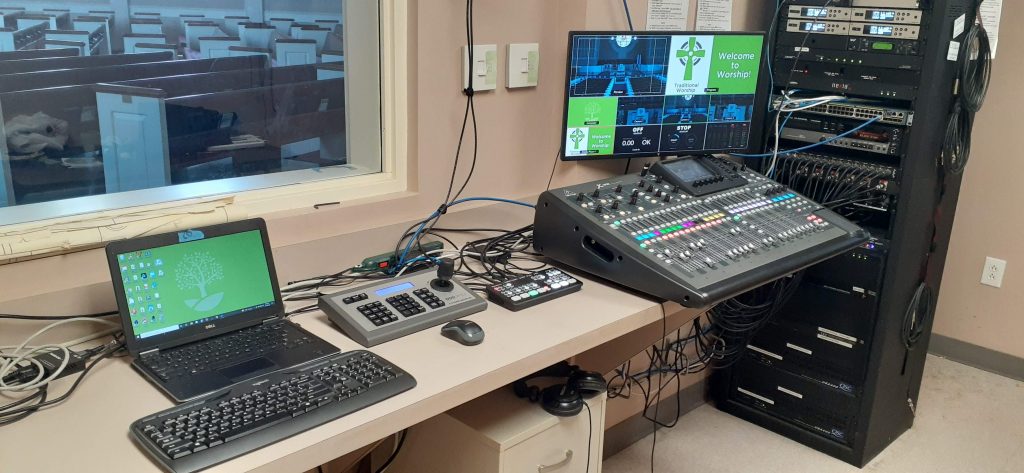
For my remote cameras I chose the PTZOptics 30X-SDI Gen 2 Broadcast Camera and the PTZOptics IP Supercontroller for a dedicated joystick controller.
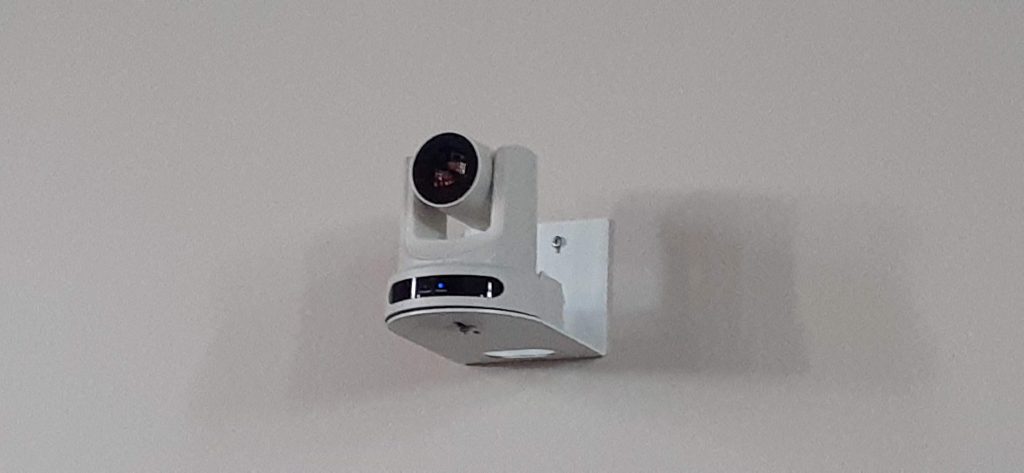
The cable runs in the Chapel were under 50 feet, so I was able to connect the cameras to the switcher with HDMI cables. But, the cameras in the Sanctuary were further from the switcher so I had to use the SDI outputs and run them through Blackmagic Design Micro Converters SDI to HDMI to get the signal into the ATEM Mini Pro. The new SDI version of the switcher would have simplified the camera connections, but I would have still required a converter to connect the video outputs to my HDMI monitors.
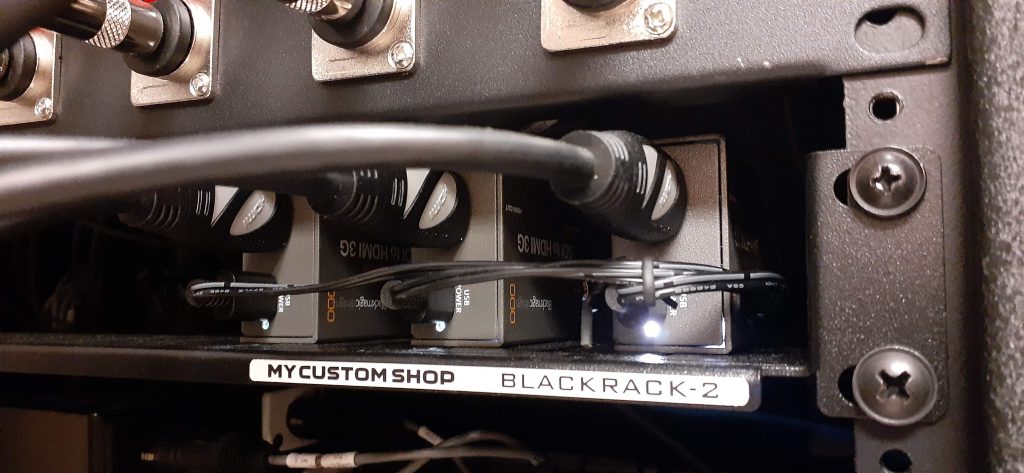
All of the cameras, controllers, switchers, and mixers are connected and controllable over our computer network. The cameras and controllers are also powered over the ethernet cables (POE) which greatly simplified the installation process. We didn’t have to install any new electrical outlets.
A side benefit of everything being controllable over the network is that I can operate and monitor everything from any location in the building. In fact, I was able to run the controls one Sunday morning from 720 miles away using a laptop setup in the kitchen of my parent’s house.
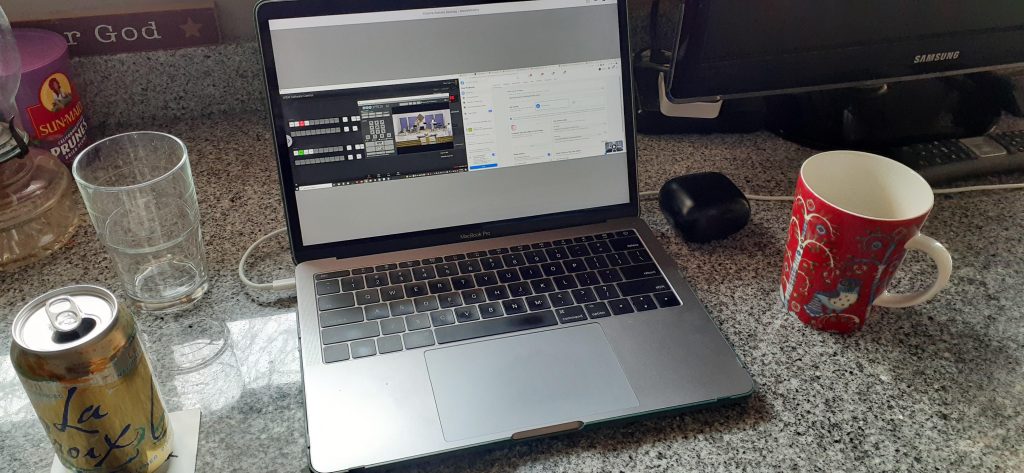
Finishing Touches
Once all the hardware was in place I set to work refining the livestream experience. I used the graphics capabilities of the ATEM Mini Pro to add opening and closing title screens to the program. I also created lower 3rds for all of the ministers and used the computer control software for the ATEM to program macros to automate things like swapping the active graphic and animating the the 3rds on and off the screen. We also started using a re-streaming service to send the livestream to YouTube and Facebook at the same time (we have a substantial Facebook following, but prefer to embed the YouTube stream on our website.)
I also began writing up process documents to teach volunteers how to use equipment. We chose to use the same equipment in both Sunday worship spaces (there is a 3rd setup in the Youth Worship Room that uses the same mixer and switcher gear along with our old camcorders) so that everyone who gets trained can work in any of the livestreaming spaces in the building.
We still need to rearrange some of the equipment on the desks and maybe create some desk customizations to more securely mount the hardware and hide the cables. I also have a long-term project planned to build a custom A/V station at the back of the Chapel to replace the makeshift collection of old desks and folding tables that are currently holding all of the equipment in that room.
